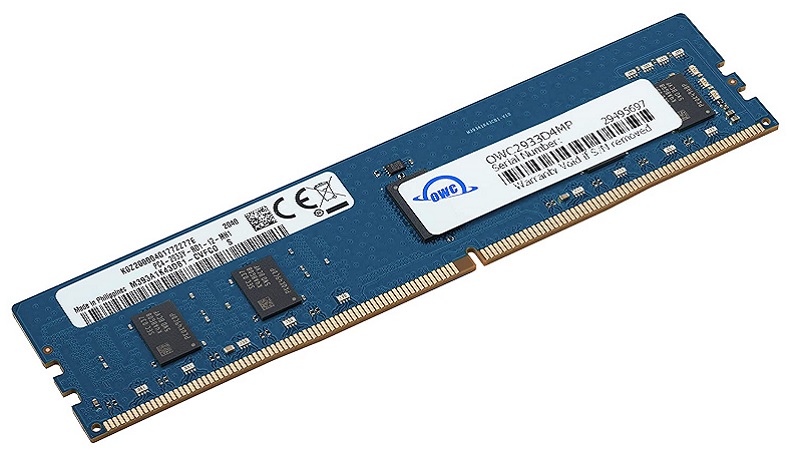In This Article
What is RDIMM (Registered Dual Inline Memory Module)?
RDIMM or Registered Dual Inline Memory Module refers to the buffered memory that technically has a hardware register between the memory controller and the RAM to hold the control signals.
KEY TAKEAWAYS
- A Registered Dual Inline Memory Module offers better reliability and performance than a regular DIMM or Unbuffered DIMM.
- These specific memory chips are usually used in servers.
- The high-cost factor of the RDIMM does not allow using them in desktop and laptop computers.
- There is a hardware register in the RDIMM to buffer the control signals for the module.
Understanding RDIMM (Registered Dual Inline Memory Module)

RDIMM is a specific type of memory chip that is specially designed to be used in specific systems that need access to a larger amount of memory, such as the servers. The design features of these memory modules offer:
- Higher stability
- Better scalability
- Greater reliability
- Higher performance
All the time, it reduces the electrical load, thereby helping the memory controller to function better.
Performance
The hardware register in the RDIMM helps it to perform better.
Though the buffering of the control signals to the modules by the hardware register in the module uses more power and adds a clock cycle, it allows the module to handle heftier electrical loads.
This is due to the fact that it places lower electrical loads on the memory controller. This, in turn, helps a single system with added memory modules to remain stable.
The performance level of the RDIMMs also depends on other factors, such as interleaving.
However, using a RDIMM comes with a performance penalty. Ideally, in this particular memory module, every read and write operation is buffered for a single cycle between the memory and the bus.
This causes it to run a cycle behind when compared with an unregistered memory.
And there is also a compatibility issue. Typically, using RDIMM will need a matching motherboard, otherwise, it will not work.

Types
There are a few specific variants of Registered DIMMs available on the market, as explained below.
Load Reduced DIMM
Also known as LRDIMM, these particular memory modules come with an additional buffer for the data lines.
This means that, in them, both data and control lines are buffered.
However, the nature of the entire set of signals is kept parallel, which, as a result, offers larger maximum capacities overall and does not need converting between parallel and serial signal forms.
Fully Buffered DIMM
Also known as FBDIMM, these specific memory modules offer even larger memory capacities.
These chips typically come with a more complicated buffer chip that translates between a narrow yet high-speed serial memory bus and a wide bus.
This means that in these memory modules, all data, address and control transfers typically happen in a serial manner.
However, the added logic in the memory chips drives them by transforming the serial input into a parallel signal as required.
Both of these types of buffered DIMMs are specially designed to serve the primary objective of the RDIMM, which is to reduce the load on the memory bus.
Is RDIMM the Same as ECC?
To put it simply, RDIMM does not relate to Error Correction Code or ECC RAM directly, though it often uses a technology that is paired with the latter. Still, these two are not the same thing.
Ideally, there is a specific type of register in the registered memory located between the memory controller of the system and the Random Access Memory (RAM), which typically helps in reducing the load on the memory controller.
This specific feature allows using additional memory modules at a time than it would have been possible otherwise.
On the other hand, the ECC RAM comes with additional memory modules already configured in its design which helps in correcting the errors in flips of single bit. It also reports when there are more than two flips.
This makes the ECC RAM chips more reliable in comparison to a regular memory, but also more expensive at the same time.
In contrast, the RDIMM is a specific kind of mechanism which helps in optimizing the transfer of memory to the computer system by means of additional circuitry.
Ideally, due to the design of the registered memory modules, the amount of RAM that the Central Processing Unit (CPU) can access is simply doubled.
Can You Use DIMM Instead of RDIMM?
Well, it primarily depends on the specifications of the motherboard as to whether or not you will be able to use a regular Dual Inline Memory Module instead of a Registered DIMM.
If the motherboard is designed to match the memory type, you can use it, and vice versa.
Whatever it is, you simply cannot mix a registered and an unregistered memory module.
Conclusion
So, coming to the end of this article, you know that the Registered or buffered DIMMs are more reliable and scalable than the regular DIMMs.
It supports the higher memory needs of the servers, but they need a matching motherboard to perform.